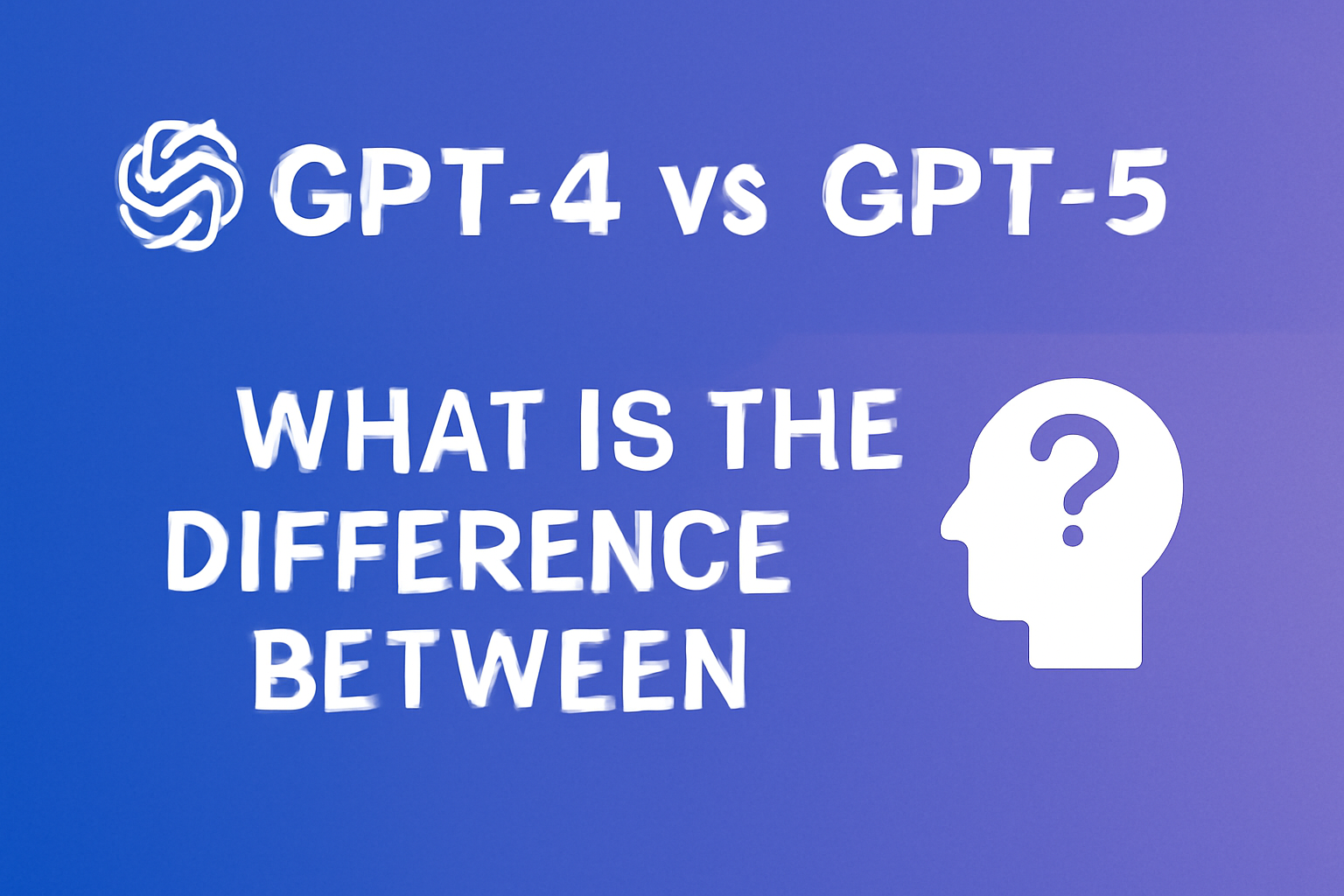What is the difference between GPT-4 and 5? If you’ve been using AI for writing, coding, or even brainstorming, you’ve probably noticed how each new version feels sharper, faster, and more human-like. With GPT-5 now here, it’s time to dive deep into the improvements that set it apart from GPT-4.
In this article, we’ll break down the major updates, performance boosts, use cases, and why GPT-5 is considered a significant leap forward. By the end, you’ll have a clear understanding of what is the difference between GPT-4 and 5 and how it affects everyday users, businesses, and developers.
📌 Introduction: From GPT-4 to GPT-5
When OpenAI released GPT-4, it was celebrated for its natural conversation style, reasoning ability, and advanced multi-modal input (accepting both text and images). But as demand for more reliability, faster response times, and higher accuracy grew, GPT-5 was introduced.
So, what is the difference between GPT-4 and 5? While GPT-4 was revolutionary, GPT-5 focuses on refinement, scaling up capabilities, and bridging the gap between human-like reasoning and AI automation.
⚡ Key Differences Between GPT-4 and GPT-5
Let’s explore the core areas where GPT-5 has leveled up compared to GPT-4.
1. 🚀 Performance and Speed
- GPT-4: Known for accurate results but occasionally slower in complex tasks.
- GPT-5: Optimized algorithms deliver faster responses, even for large datasets or multi-step reasoning.
2. 🧠 Reasoning and Accuracy
- GPT-4: Strong reasoning ability but sometimes limited in context handling.
- GPT-5: Improved logical reasoning, fewer hallucinations (false outputs), and better long-context understanding.
3. 🎨 Multi-Modal Capabilities
- GPT-4: Accepted text and images, but with restrictions.
- GPT-5: Expands multi-modal support, offering smoother integration for voice, video, and more interactive AI workflows.
4. 📊 Memory and Context
- GPT-4: Limited memory per conversation, requiring resets in long sessions.
- GPT-5: Extended context windows and stronger memory handling allow continuous interactions over longer periods.
5. 🌍 Real-World Integration
- GPT-4: Widely used in chatbots, coding tools, and education.
- GPT-5: More enterprise-ready, with deeper integration into productivity apps, customer support systems, and advanced research tools.
✅ Why Does This Upgrade Matter?
The transition from GPT-4 to GPT-5 is not just about small technical tweaks. Businesses, students, developers, and professionals benefit from:
- Greater efficiency in workflows.
- More reliable AI assistance with reduced mistakes.
- Enhanced personalization in responses.
- Better creativity for writing, design, and idea generation.
Essentially, what is the difference between GPT-4 and 5 comes down to improved trustworthiness, broader usage, and a step closer to AI that feels like real human collaboration.
📖 Practical Examples of GPT-5 vs GPT-4
- For Writers: GPT-5 suggests more unique ideas with less repetition.
- For Developers: GPT-5 writes cleaner, bug-free code faster than GPT-4.
- For Businesses: GPT-5 delivers smoother customer support experiences with accurate context retention.
- For Students: GPT-5 provides clearer explanations, better summarization, and improved learning guidance.
🏆 Comparison Table: GPT-4 vs GPT-5
| Feature | GPT-4 | GPT-5 |
| Response Speed | Moderate | Much faster |
| Accuracy | High | Higher with fewer mistakes |
| Context Handling | Limited | Extended memory |
| Multi-Modal Support | Text + Images | Text, Images, Voice, Video |
| Use Cases | General AI, chat, coding | Broader enterprise + creative |
| Reliability | Good | Excellent |
🔮 Future of GPT Models
Understanding what is the difference between GPT-4 and 5 also gives a glimpse of where AI is heading. GPT-5 is not the end—it’s another milestone. Future versions are likely to bring:
- More human-like emotional intelligence.
- Better personalization with individual memory.
- Smarter decision-making for complex problem solving.
🎯 Conclusion
So, what is the difference between GPT-4 and 5? The answer lies in performance, accuracy, memory, and expanded multi-modal capabilities. GPT-5 is faster, more reliable, and more versatile than GPT-4, making it the go-to choice for users who need advanced AI assistance.
The shift from GPT-4 to GPT-5 shows us that AI is no longer just a tool—it’s becoming a partner in creativity, productivity, and problem-solving.
❓ FAQs
1. What is the difference between GPT-4 and 5 in terms of speed?
GPT-5 is significantly faster, handling complex queries more smoothly than GPT-4.
2. Is GPT-5 more accurate than GPT-4?
Yes, GPT-5 reduces hallucinations and improves reasoning accuracy compared to GPT-4.
3. Can GPT-5 handle longer conversations than GPT-4?
Absolutely. GPT-5 has extended context handling, allowing for longer, more consistent interactions.
4. Does GPT-5 support voice and video?
Yes, unlike GPT-4, GPT-5 is designed to support text, images, voice, and video in a more integrated way.
5. Which one is better for coding—GPT-4 or GPT-5?
GPT-5 is better because it writes cleaner, optimized code with improved debugging.
6. Are businesses shifting from GPT-4 to GPT-5?
Yes, many enterprises are adopting GPT-5 for its reliability and integration in workflows.
7. How does GPT-5 improve user experience over GPT-4?
It offers faster replies, personalized outputs, and better memory, creating smoother interactions.
8. Is GPT-5 the final version of GPT models?
No, GPT-5 is just the next step. Future models will likely continue improving reasoning, creativity, and real-world usability.
